Everything About Albuquerque, New Mexico
History
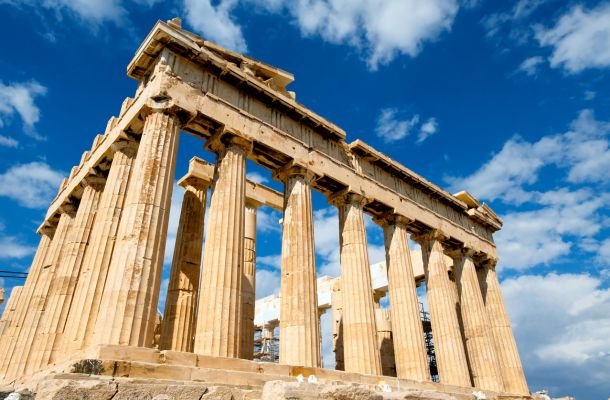
Albuquerque, the largest city in New Mexico, boasts a rich and diverse history that spans centuries. The city’s origins date back to the early 18th century when it was founded as La Villa de Alburquerque in 1706 by Governor Francisco Cuervo y Valdés. The name was in honor of the Viceroy of New Spain, the Duke of Alburquerque, a title rooted in Spanish nobility. The extra “r” in the original spelling of the name was dropped over time, leading to the current spelling of Albuquerque.
Before European settlement, the area was home to Indigenous peoples, including the Puebloans, who had been living in the region for thousands of years. These early inhabitants left behind a legacy of culture, architecture, and art, much of which is still evident in the region today.
During the Spanish colonial period, Albuquerque served as a strategic military outpost and a vital stop along El Camino Real, a trade route that connected Mexico City to the northernmost reaches of New Spain. The city’s strategic location along the Rio Grande made it a critical hub for trade and communication.
In the 19th century, Albuquerque became part of the United States following the Mexican-American War and the signing of the Treaty of Guadalupe Hidalgo in 1848. The arrival of the Atchison, Topeka, and Santa Fe Railway in 1880 marked a turning point in the city’s development, spurring growth and economic expansion. The railroad brought new settlers, businesses, and industries, transforming Albuquerque from a small settlement into a bustling urban center.
The 20th century saw Albuquerque’s continued growth, particularly after World War II, when the city became a center for military and scientific research. The establishment of Kirtland Air Force Base and the Sandia National Laboratories cemented Albuquerque’s role as a key player in the defense and technology sectors. Today, Albuquerque is a vibrant city that blends its historical roots with modern amenities, making it a unique and dynamic place to live and visit.
Geography
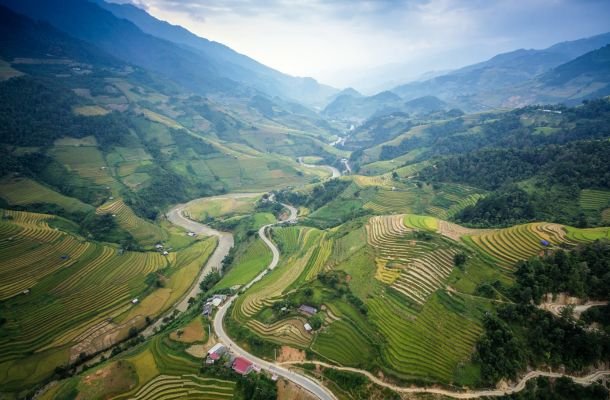
Albuquerque is located in the central part of New Mexico, nestled in the high desert at an elevation of about 5,312 feet above sea level. The city is situated in the Rio Grande Valley, which is flanked by the Sandia Mountains to the east and the West Mesa to the west. The Rio Grande, one of the longest rivers in North America, flows through the heart of the city, providing a vital water source and contributing to the region’s unique ecosystem.
The city’s geography is characterized by its striking natural beauty and diverse landscapes. The Sandia Mountains, which reach elevations of over 10,000 feet, are a dominant feature of the landscape and provide a stunning backdrop to the city. The mountains are part of the larger Rocky Mountain range and are known for their dramatic cliffs, deep canyons, and diverse flora and fauna.
To the west of the city lies the West Mesa, a large plateau formed by ancient volcanic activity. The mesa is home to the Petroglyph National Monument, which features thousands of ancient petroglyphs etched into the basalt rock by Indigenous peoples and early Spanish settlers.
Albuquerque’s location in the high desert means that the city experiences a semi-arid climate, with hot summers, mild winters, and low humidity. The city’s elevation and proximity to the mountains also result in a wide range of microclimates, with cooler temperatures and more precipitation in the higher elevations of the Sandia Mountains.
Geology
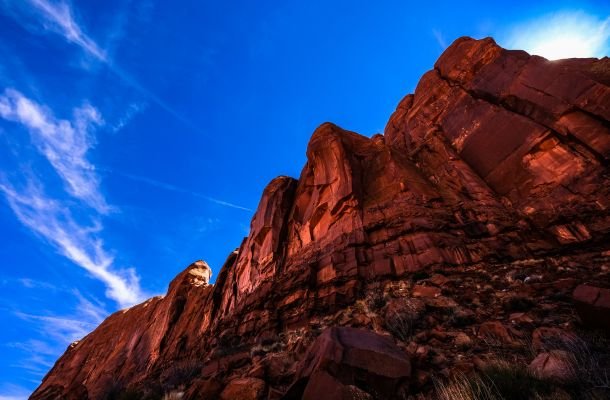
The geology of Albuquerque is as diverse and fascinating as its landscape. The city sits within the Rio Grande Rift, a geological feature that stretches from Colorado to Mexico. The rift is a region of the Earth’s crust that has been slowly pulling apart over millions of years, creating a series of basins and ranges that define the topography of the region.
The Sandia Mountains, located to the east of Albuquerque, are a prime example of the geological activity in the area. These mountains are part of the larger Rio Grande Rift system and were formed by a combination of uplift and faulting. The Sandias are composed primarily of ancient Precambrian granite, which is more than a billion years old, and younger sedimentary rocks such as sandstone and limestone.
The West Mesa, located to the west of the city, is another important geological feature. The mesa is a large volcanic plateau that was formed by a series of volcanic eruptions that occurred between 150,000 and 200,000 years ago. The volcanic activity in the region is responsible for the basalt rock that dominates the mesa, as well as the numerous volcanic cones and craters that dot the landscape.
The Rio Grande itself plays a significant role in the geology of Albuquerque. The river has carved a broad, shallow valley through the region, depositing layers of sediment that have shaped the landscape over millions of years. The river’s meandering course and periodic flooding have also created a dynamic and ever-changing environment, contributing to the region’s rich biodiversity.
Neighborhoods
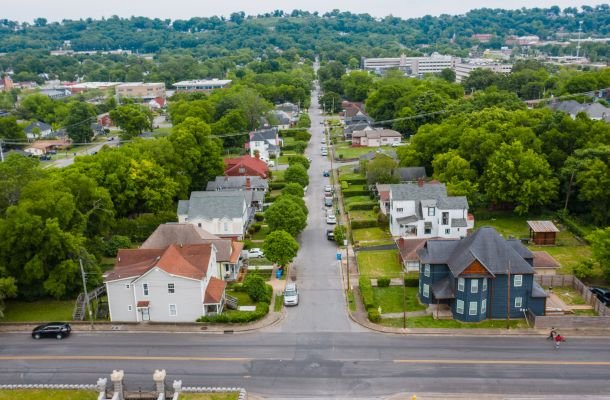
Albuquerque is a city of diverse neighborhoods, each with its own unique character and charm. From historic districts to modern developments, the city’s neighborhoods offer a wide range of living experiences for residents and visitors alike.
One of the most iconic neighborhoods in Albuquerque is Old Town. Founded in 1706, Old Town is the city’s oldest neighborhood and the historic heart of Albuquerque. The area is characterized by its adobe architecture, narrow streets, and central plaza, which is surrounded by shops, galleries, and restaurants. Old Town is also home to the San Felipe de Neri Church, one of the oldest surviving buildings in the city.
Downtown Albuquerque is the city’s central business district and a hub of activity. The area is known for its mix of historic and modern architecture, as well as its vibrant arts and entertainment scene. Downtown is home to a variety of restaurants, bars, theaters, and cultural institutions, including the Albuquerque Museum and the KiMo Theatre.
Nob Hill is another popular neighborhood, known for its eclectic mix of shops, restaurants, and nightlife. Located along Central Avenue, which is part of the historic Route 66, Nob Hill is a trendy and walkable area that attracts both locals and visitors. The neighborhood is also known for its well-preserved mid-century architecture and vibrant community events.
The North Valley is a more rural and agricultural area located along the Rio Grande. This neighborhood is known for its large properties, lush landscapes, and quiet, country-like atmosphere. The North Valley is home to a number of farms, wineries, and equestrian facilities, as well as the beautiful Los Poblanos Historic Inn and Organic Farm.
Other notable neighborhoods in Albuquerque include the Heights, which offers stunning views of the Sandia Mountains; the Westside, a rapidly growing area with a mix of residential and commercial developments; and the South Valley, a culturally rich area with a strong Hispanic influence.
Climate

Albuquerque’s climate is characterized by its semi-arid conditions, with hot summers, mild winters, and abundant sunshine throughout the year. The city’s high desert location and elevation of over 5,000 feet contribute to its unique climate, which features significant temperature variations between day and night.
Summers in Albuquerque are typically hot and dry, with average high temperatures ranging from the mid-80s to the mid-90s Fahrenheit. However, the city’s low humidity makes the heat more tolerable than in other regions. Summer evenings often bring relief from the heat, with temperatures dropping significantly after sunset. The summer monsoon season, which occurs from July to September, brings occasional afternoon thunderstorms that can produce heavy rain and lightning.
Winters in Albuquerque are generally mild, with average high temperatures in the 40s and 50s Fahrenheit. While snowfall is not uncommon, it is usually light and melts quickly due to the city’s abundant sunshine. The Sandia Mountains, however, receive more significant snowfall and offer opportunities for winter sports such as skiing and snowboarding.
Spring and fall are considered the most pleasant seasons in Albuquerque, with mild temperatures and clear skies. These transitional seasons are marked by blooming wildflowers in the spring and vibrant fall foliage, particularly in the Bosque, the cottonwood forest along the Rio Grande.
Albuquerque’s climate is also characterized by its high levels of sunshine, with the city averaging over 300 sunny days per year. This abundant sunshine, combined with the city’s dry air, makes Albuquerque a popular destination for outdoor activities such as hiking, biking, and hot air ballooning.
Demographics

As of the latest census, Albuquerque has a population of approximately 560,000 people, making it the largest city in New Mexico. The city’s population is diverse, with a rich blend of cultural and ethnic backgrounds that reflect its long history and geographic location.
Hispanic and Latino residents make up the largest ethnic group in Albuquerque, accounting for nearly half of the city’s population. This reflects the city’s historical ties to Spain and Mexico, as well as its proximity to the U.S.-Mexico border. The Hispanic influence is evident in the city’s architecture, cuisine, and cultural traditions.
In addition to its Hispanic population, Albuquerque is home to a significant number of Native Americans, particularly from the Puebloan tribes that have lived in the region for thousands of years. The city also has smaller populations of African American, Asian, and Pacific Islander residents, contributing to its cultural diversity.
Albuquerque’s population is relatively young, with a median age of around 36 years. The city is known for its vibrant arts and music scene, as well as its numerous outdoor recreational opportunities, which attract a wide range of residents and visitors.
The city’s demographic profile also includes a growing number of retirees, drawn to Albuquerque’s mild climate, affordable cost of living, and access to healthcare services. The presence of several military installations and defense contractors in the area also contributes to a sizable population of military personnel and veterans.
Economy

Albuquerque, New Mexico, has a diverse economy that reflects its unique geographical location, historical significance, and cultural diversity. The city’s economy is a mix of traditional industries such as agriculture and manufacturing, alongside modern sectors like technology, healthcare, and research.
Traditional Industries
Historically, Albuquerque’s economy was heavily based on agriculture, with the fertile Rio Grande Valley providing ideal conditions for farming. Early settlers, including Native American tribes and later Spanish colonists, cultivated crops such as corn, beans, squash, and chile peppers, which remain integral to the local cuisine today.
The arrival of the railroad in the late 19th century transformed Albuquerque into a hub for trade and commerce. This development facilitated the growth of manufacturing industries, including textiles, food processing, and lumber. The city’s strategic location along key transportation routes continues to support its role as a distribution center for goods in the Southwest.
Modern Sectors
In the 20th century, Albuquerque became a center for technology and research, largely due to the establishment of several key institutions. The Sandia National Laboratories, founded in 1949, is one of the largest employers in the city and plays a crucial role in research and development, particularly in national security and nuclear energy. The presence of Kirtland Air Force Base also contributes significantly to the local economy, providing jobs and supporting defense-related industries.
The healthcare sector is another major contributor to Albuquerque’s economy. The city is home to numerous hospitals, clinics, and research institutions, including the University of New Mexico Health Sciences Center. This facility is a leading provider of medical care and education in the region, and it has spurred the growth of related industries such as biotechnology and pharmaceuticals.
Tourism
Tourism is a vital component of Albuquerque’s economy, driven by the city’s rich cultural heritage, natural beauty, and numerous events and festivals. The Albuquerque International Balloon Fiesta, held annually in October, is the largest hot air balloon festival in the world and attracts hundreds of thousands of visitors. The event generates significant revenue for local businesses, including hotels, restaurants, and retailers.
Albuquerque’s historic sites, museums, and outdoor recreational opportunities also draw tourists year-round. Old Town Albuquerque, with its adobe buildings and historic plaza, is a popular destination for those interested in the city’s Spanish colonial history. Additionally, the Sandia Mountains and the Rio Grande provide ample opportunities for hiking, skiing, and other outdoor activities.
Real Estate and Construction
The real estate and construction industries have experienced growth in recent years, driven by Albuquerque’s expanding population and the demand for housing and commercial development. The city’s relatively affordable cost of living compared to other parts of the United States has attracted new residents, particularly from states like California and Texas. This influx has led to increased construction activity, particularly in suburban areas such as the Westside and the Northeast Heights.
Renewable Energy
Renewable energy is an emerging sector in Albuquerque’s economy, with the city making strides in solar and wind energy production. New Mexico’s abundant sunshine makes it an ideal location for solar power projects, and Albuquerque has seen an increase in the installation of solar panels on homes and businesses. The state government has also set ambitious renewable energy targets, which are expected to drive further investment in this sector.
Culture

Albuquerque is a city rich in culture, where a blend of Native American, Hispanic, and Anglo traditions creates a unique and vibrant community. The city’s cultural landscape is reflected in its arts, festivals, cuisine, and everyday life, making Albuquerque a place where history and modernity coexist.
Arts and Museums
Albuquerque has a thriving arts scene, with numerous galleries, museums, and cultural institutions showcasing the work of local and international artists. The Albuquerque Museum, located in Old Town, is one of the city’s premier cultural institutions, featuring exhibits on the art and history of the Southwest. The museum’s collection includes works by renowned artists, as well as artifacts from the region’s Native American, Spanish, and Mexican heritage.
The Indian Pueblo Cultural Center is another important cultural institution, dedicated to preserving and promoting the history and culture of New Mexico’s 19 Pueblo tribes. The center offers exhibits, workshops, and performances that provide insight into the traditions and contemporary life of the Pueblo people.
In addition to its museums, Albuquerque is home to a vibrant performing arts scene. The KiMo Theatre, a historic Art Deco building in downtown Albuquerque, hosts a variety of performances, including plays, concerts, and film screenings. The National Hispanic Cultural Center, located in the Barelas neighborhood, is a hub for Hispanic arts and culture, offering performances, exhibitions, and educational programs.
Festivals and Events
Albuquerque’s calendar is filled with festivals and events that celebrate the city’s diverse cultural heritage. The Albuquerque International Balloon Fiesta is the most famous of these events, attracting visitors from around the world to witness the spectacle of hundreds of hot air balloons taking to the skies. The fiesta is a celebration of Albuquerque’s unique connection to ballooning, which dates back to the 1970s.
The New Mexico State Fair, held annually in September, is another major event that showcases the state’s agricultural and cultural traditions. The fair features rodeos, livestock exhibitions, and a wide range of entertainment, from live music to carnival rides.
Albuquerque’s rich Hispanic heritage is celebrated during events such as the Fiestas de Albuquerque, which commemorates the founding of the city. The event includes traditional music, dance, and food, as well as a reenactment of the Spanish settlers’ arrival in the Rio Grande Valley.
Native American culture is also prominently featured in Albuquerque’s festivals, with events like the Gathering of Nations Powwow. This annual event is one of the largest powwows in North America, bringing together thousands of Native American dancers, singers, and artisans from across the continent.
Cuisine
Albuquerque’s culinary scene is a reflection of its multicultural heritage, with a focus on New Mexican cuisine, which blends Native American, Spanish, and Mexican influences. The city is famous for its chile peppers, particularly the Hatch green chile, which is a staple in many local dishes. Whether it’s red or green, chile is a central ingredient in Albuquerque’s cuisine, appearing in everything from enchiladas and tamales to burgers and pizzas.
Traditional New Mexican dishes such as carne adovada, posole, and sopapillas are popular at local restaurants, many of which have been family-owned for generations. Albuquerque is also home to a growing number of breweries and wineries, with the city’s craft beer scene gaining national recognition.
In addition to traditional fare, Albuquerque’s food scene includes a wide range of international cuisines, reflecting the city’s diverse population. From Vietnamese pho to Italian pasta, the city’s restaurants offer something for every palate.
Colleges and universities
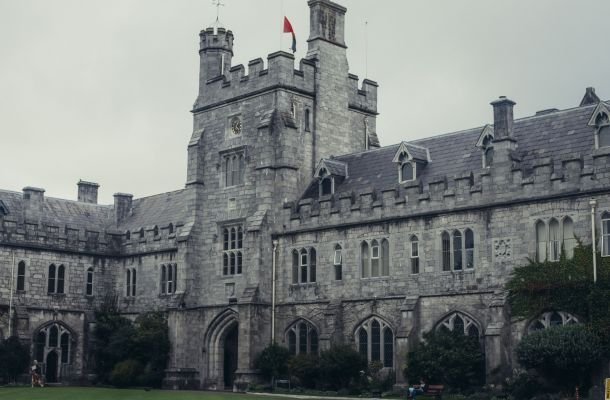
Albuquerque is a center for higher education in New Mexico, with several institutions offering a wide range of academic programs and contributing to the city’s intellectual and cultural life.
University of New Mexico (UNM)
The University of New Mexico is the largest and most prominent higher education institution in Albuquerque. Founded in 1889, UNM is a public research university with a diverse student body of over 20,000 students. The university offers more than 200 degree programs, including undergraduate, graduate, and professional degrees in fields such as medicine, law, engineering, and the arts.
UNM is known for its strong research programs, particularly in areas such as health sciences, engineering, and environmental studies. The university is home to several research centers and institutes, including the UNM Health Sciences Center, which is the largest academic health complex in the state.
The university’s campus is a hub of cultural activity, with numerous museums, galleries, and theaters that contribute to Albuquerque’s vibrant arts scene. The Maxwell Museum of Anthropology, located on the UNM campus, is one of the oldest anthropology museums in the United States and features exhibits on the cultural history of the Southwest and beyond.
Central New Mexico Community College (CNM)
Central New Mexico Community College is the largest community college in the state and plays a crucial role in providing affordable education and workforce training to Albuquerque’s residents. CNM offers associate degrees and certificate programs in a wide range of fields, including business, health care, information technology, and trades.
CNM’s main campus is located in the heart of Albuquerque, with additional campuses throughout the city and surrounding areas. The college is known for its strong partnerships with local businesses and industries, providing students with opportunities for internships, apprenticeships, and job placement.
Southwestern Indian Polytechnic Institute (SIPI)
The Southwestern Indian Polytechnic Institute is a federally funded tribal college located in Albuquerque. SIPI serves Native American students from tribes across the United States, offering associate degrees and certificates in fields such as environmental science, engineering, and business.
SIPI is dedicated to promoting higher education and career opportunities for Native American students, with a focus on preserving and promoting indigenous cultures and traditions. The institute provides a supportive learning environment that honors Native American heritage while preparing students for success in a modern workforce.
Other Institutions
Albuquerque is also home to several private colleges and specialized institutions, including the Southwest University of Visual Arts and the National American University. These institutions offer a variety of programs in fields such as art, design, business, and healthcare, contributing to the diversity of educational opportunities in the city.
Media

Albuquerque has a dynamic media landscape, with a variety of outlets providing news, entertainment, and cultural content to the city’s residents. The media in Albuquerque reflects the city’s diverse population and cultural heritage, with a mix of English and Spanish-language programming.
Newspapers
The Albuquerque Journal is the largest daily newspaper in New Mexico and has been a key source of news for the city since its founding in 1880. The newspaper covers a wide range of topics, including local news, politics, business, sports, and entertainment. The Albuquerque Journal also produces several weekly and monthly publications, such as the Journal North and the Journal West, which focus on specific regions of the city.
In addition to the Albuquerque Journal, the city is served by several other newspapers and magazines, including the weekly alternative paper, The Alibi, which covers arts, culture, and local events. There are also a number of Spanish-language publications, such as El Hispano News, which cater to Albuquerque’s large Hispanic population.
Television
Albuquerque is the primary media market for the state of New Mexico, with several major television stations serving the city. These include affiliates of the major networks, such as KOB (NBC), KRQE (CBS), KOAT (ABC), and KLUZ (Univision). These stations provide local news, weather, and entertainment programming, as well as coverage of regional and national events.
The city is also home to New Mexico PBS, which operates two public television stations, KNME and KNMD. These stations offer educational programming, documentaries, and cultural content, including shows that highlight the history and culture of New Mexico.
Radio
Albuquerque has a diverse radio landscape, with stations offering a wide range of music, talk, and news programming. The city has several popular FM stations that play everything from contemporary hits to classic rock, country, and Latin music. Public radio is also well-represented, with KUNM, operated by the University of New Mexico, providing news, music, and cultural programming.
Spanish-language radio is an important part of Albuquerque’s media scene, with several stations offering programming in Spanish, including news, talk shows, and music. These stations serve the city’s large Hispanic community and provide a connection to broader cultural and political issues affecting Spanish-speaking populations.
Online Media
As in many cities, online media has become an increasingly important source of news and information in Albuquerque. The city’s major newspapers and television stations all have strong online presences, offering digital content that includes breaking news, video, and interactive features.
In addition to traditional media outlets, Albuquerque is home to a growing number of independent online news sites and blogs that cover local issues, politics, and culture. These digital platforms provide alternative perspectives and engage with niche audiences, contributing to the diversity of the city’s media landscape.
Roadways

Albuquerque’s roadway system is a vital part of the city’s infrastructure, connecting residents to different parts of the city and beyond. The city’s roadways reflect its growth and development over the years, with a mix of historic routes and modern highways.
Interstate Highways
Albuquerque is served by two major interstate highways: I-25 and I-40.
Interstate 25 (I-25) runs north-south through the city, connecting Albuquerque with Santa Fe to the north and Las Cruces to the south. This highway is a key route for travelers and commuters, providing access to major destinations within New Mexico and beyond.
Interstate 40 (I-40) runs east-west and intersects with I-25 in the heart of Albuquerque. I-40 is part of the historic Route 66 and serves as a major cross-country route, connecting Albuquerque with cities like Flagstaff, Arizona, and Amarillo, Texas. This interstate is crucial for the transportation of goods and services across the Southwest.
Historic Route 66
One of the most famous roadways in Albuquerque is Historic Route 66, also known as Central Avenue within the city limits. Route 66 was once the main highway across the United States, running from Chicago to Los Angeles, and it played a significant role in the development of Albuquerque.
Today, Central Avenue remains a major thoroughfare, lined with historic motels, restaurants, and neon signs that harken back to the heyday of Route 66. The roadway passes through several key neighborhoods, including Nob Hill, Downtown, and Old Town, and is a popular route for tourists and locals alike.
Other Major Roads
Albuquerque’s roadway network also includes several other major roads and boulevards that connect different parts of the city. Paseo del Norte is a key east-west route that serves the northern part of the city, while Montgomery Boulevard and Menaul Boulevard are important east-west corridors in the central part of Albuquerque. Coors Boulevard is a major north-south road that runs along the western edge of the city, providing access to the Westside and the West Mesa.
The city also has a network of smaller roads and streets that connect residential neighborhoods, commercial areas, and industrial zones. These roads are essential for local traffic and contribute to the overall connectivity of Albuquerque.
Public Transportation
Albuquerque’s public transportation system includes a network of buses operated by ABQ RIDE. The bus system serves most of the city, with routes that connect residential areas to key destinations such as downtown, the University of New Mexico, and major shopping centers. The Rapid Transit system, which includes the ART (Albuquerque Rapid Transit) bus line, provides faster service along Central Avenue, helping to reduce traffic congestion on one of the city’s busiest roads.
The city is also exploring options for expanding its public transportation system, including potential light rail or streetcar projects that would connect different parts of Albuquerque and provide residents with more transportation options.
Major Landmarks
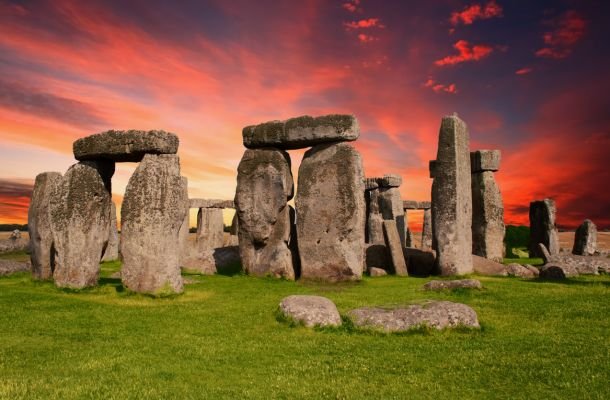
Albuquerque is home to a number of major landmarks that reflect the city’s rich history, cultural diversity, and natural beauty. These landmarks are popular destinations for both residents and visitors, offering a glimpse into Albuquerque’s past and present.
Old Town Albuquerque
Old Town Albuquerque is the historic heart of the city, dating back to its founding in 1706. This area is characterized by its adobe buildings, narrow streets, and central plaza, which has been a gathering place for centuries. Old Town is home to several important landmarks, including the San Felipe de Neri Church, which was built in 1793 and is one of the oldest buildings in the city. Today, Old Town is a popular destination for tourists, with shops, galleries, and restaurants that celebrate Albuquerque’s cultural heritage.
Sandia Peak Tramway
The Sandia Peak Tramway is one of Albuquerque’s most famous attractions, offering breathtaking views of the city and the surrounding landscape. The tramway is the longest aerial tram in the United States, stretching 2.7 miles from the base to the summit of the Sandia Mountains. At the top, visitors can enjoy panoramic views, hike along mountain trails, and dine at the Ten 3 restaurant, which offers a fine dining experience at 10,300 feet above sea level.
Albuquerque International Balloon Fiesta Park
The Albuquerque International Balloon Fiesta Park is the site of the annual Albuquerque International Balloon Fiesta, the largest hot air balloon festival in the world. The park is located on the northern edge of the city and features expansive open spaces that are perfect for balloon launches. The event attracts balloonists and spectators from around the globe, who come to witness the spectacular mass ascensions and other balloon-related activities.
Petroglyph National Monument
Petroglyph National Monument is a protected area on the western edge of Albuquerque that preserves thousands of ancient rock carvings, known as petroglyphs. These carvings were created by Native American and early Spanish settlers, and they offer a glimpse into the cultural and spiritual life of the people who once inhabited the region. The monument includes several hiking trails that allow visitors to explore the petroglyphs and the volcanic landscape of the West Mesa.
KiMo Theatre
The KiMo Theatre is a historic landmark in downtown Albuquerque, known for its distinctive Art Deco-Pueblo Revival architecture. The theater was built in 1927 and has been a center for entertainment in the city ever since. The KiMo hosts a variety of performances, including plays, concerts, and film screenings, and it is considered one of the most iconic buildings in Albuquerque.
Indian Pueblo Cultural Center
The Indian Pueblo Cultural Center is a cultural institution dedicated to preserving and promoting the history and culture of New Mexico’s 19 Pueblo tribes. The center features exhibits, workshops, and performances that provide insight into the traditions and contemporary life of the Pueblo people. It is also home to a museum, a restaurant serving traditional Native American cuisine, and a gift shop offering handmade Pueblo crafts.
University of New Mexico
The University of New Mexico is not only a major educational institution but also a landmark in its own right. The campus is home to several important buildings and cultural institutions, including the Maxwell Museum of Anthropology, which houses exhibits on the cultural history of the Southwest. The university’s architecture, which blends Pueblo Revival and modern styles, is a reflection of Albuquerque’s unique cultural identity.
Rio Grande Nature Center State Park
The Rio Grande Nature Center State Park is a natural oasis in the heart of Albuquerque, located along the banks of the Rio Grande River. The park features walking trails, bird-watching areas, and educational exhibits that highlight the ecology of the Rio Grande and the surrounding bosque (forest). The nature center is a popular spot for outdoor recreation and provides a peaceful retreat from the urban environment.
Find us
Tuesday
Wednesday
Thursday
Friday
Saturday
Sunday
10 am – 10 am
10 am – 10 am
10 am – 10 am
10 am – 10 am
10 am – 10 am
10 am – 10 am








